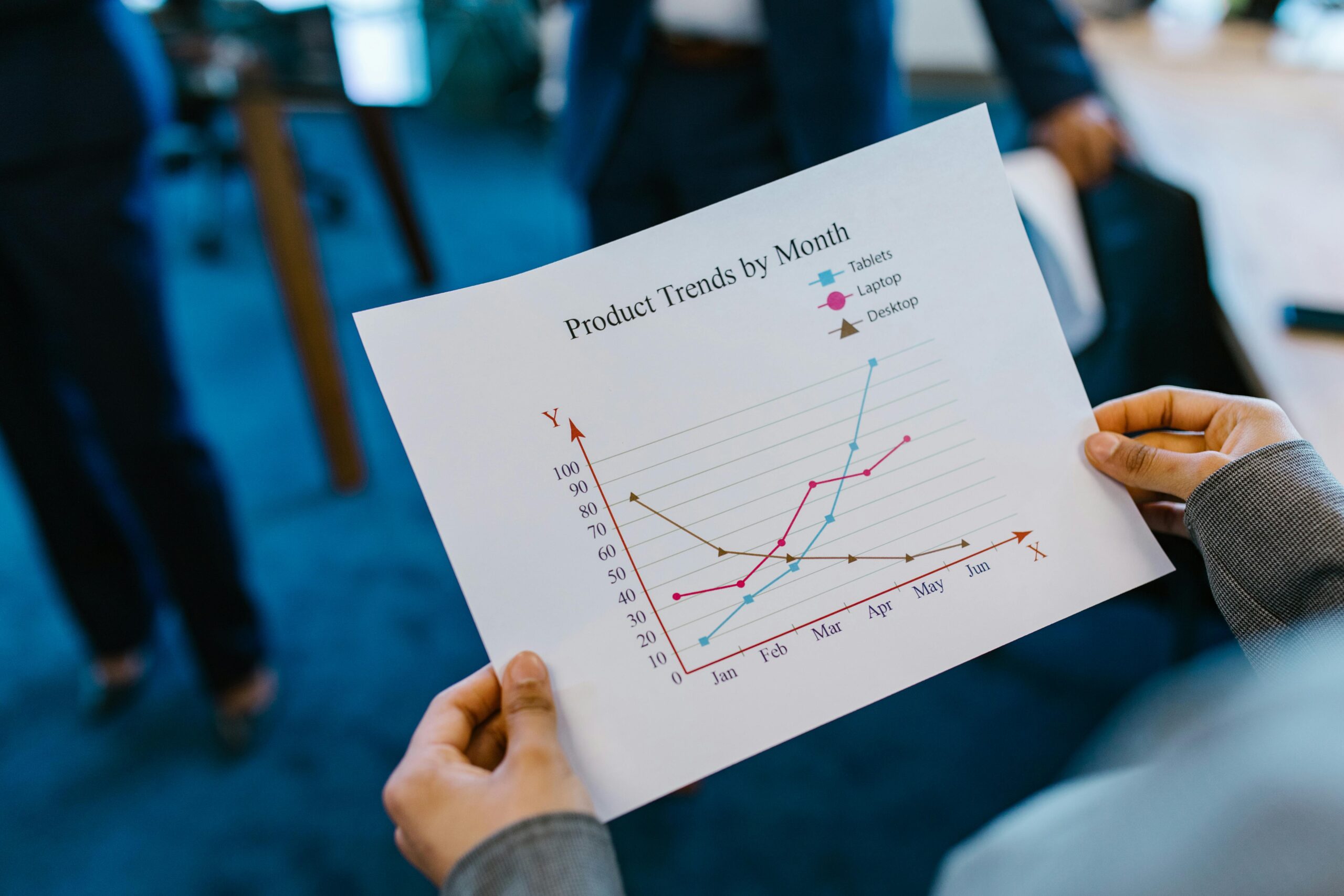In today’s fast-paced financial landscape, top BI dashboards for CFOs have become essential tools for maximizing financial oversight and maintaining a comprehensive view of an organization’s financial health. Chief Financial Officers (CFOs) play a critical role in managing financial performance, and the right business intelligence (BI) dashboards can provide CFOs with valuable insights, enabling more informed decisions. BI dashboards designed specifically for CFOs bring together key financial data, real-time metrics, and advanced analytics to streamline processes, improve forecasting, and ensure efficient resource allocation.
Why BI Dashboards Are Essential for CFOs
For CFOs, access to accurate, real-time data is crucial. BI dashboards consolidate data from multiple sources into a single, user-friendly interface, providing CFOs with an up-to-date view of an organization’s financial performance. These tools can track various financial metrics, including cash flow, revenue, and expenses, allowing for efficient monitoring and reporting.
Key Benefits of Using BI Dashboards for CFOs
- Enhanced Data Accuracy: With automated data collection and visualization, CFOs can reduce manual errors, ensuring that financial reports and insights are precise and reliable.
- Real-Time Decision Making: BI dashboards offer real-time data updates, allowing CFOs to make timely decisions based on the latest information.
- Improved Forecasting and Budgeting: Historical data analysis enables CFOs to predict future trends, make accurate forecasts, and set effective budgets.
- Increased Transparency and Accountability: With clear financial metrics readily available, CFOs can provide transparent reports to stakeholders, enhancing trust and accountability.
Top BI Dashboards for CFOs: Maximizing Financial Oversight
1. Financial Performance Dashboard
A financial performance dashboard provides CFOs with a high-level view of key financial metrics, such as revenue, profit, and expenses. This type of dashboard allows CFOs to track performance against targets, identify financial risks, and make quick adjustments if necessary. Key features include:
- Revenue and Expense Tracking: Visualizes revenue and expenses over time, enabling CFOs to monitor financial health.
- Profitability Analysis: Shows the profitability of different business units or products, helping CFOs allocate resources more efficiently.
- KPI Monitoring: Tracks essential key performance indicators (KPIs) like gross margin, net profit, and return on investment (ROI).
2. Cash Flow Dashboard
Cash flow is critical to any business, and a cash flow dashboard gives CFOs a clear picture of cash inflows and outflows. This dashboard is essential for understanding liquidity and ensuring that the organization has enough cash to meet its obligations. Key components include:
- Cash Flow Trends: Displays cash flow trends over weeks, months, or quarters, making it easy to spot seasonal patterns.
- Accounts Receivable and Payable: Provides an overview of outstanding receivables and payables, helping CFOs manage cash effectively.
- Cash Forecasting: Uses historical data to predict future cash flows, aiding in budgeting and planning.
3. Budget vs. Actual Dashboard
The budget vs. actual dashboard helps CFOs keep track of financial performance in relation to the organization’s budget. This comparison is essential for identifying areas where spending is over or under budget, enabling timely adjustments. Features of this dashboard include:
- Variance Analysis: Shows variances between budgeted and actual figures, highlighting areas that need attention.
- Expense Breakdown: Breaks down expenses by category, such as payroll, marketing, and operations, for in-depth analysis.
- Forecasting Tools: Projects future budget requirements based on current spending trends, helping CFOs plan more accurately.
4. Profit and Loss (P&L) Dashboard
A P&L dashboard provides a snapshot of an organization’s profitability, displaying data on income, expenses, and net profit. This dashboard helps CFOs assess financial performance and identify trends. Key elements include:
- Income Statement Overview: Summarizes income, expenses, and profit for quick analysis.
- Detailed Cost Analysis: Allows CFOs to view costs associated with specific projects or departments.
- Gross and Net Profit Tracking: Tracks gross and net profits over time, providing insights into profitability.
5. Financial KPI Dashboard
The financial KPI dashboard focuses on tracking key financial metrics that reflect the overall financial health of the company. This type of dashboard is ideal for CFOs who want to keep a close eye on specific KPIs. Important features include:
- Customizable KPIs: Allows CFOs to select KPIs that align with the organization’s goals, such as EBITDA, working capital, and current ratio.
- Goal Tracking: Shows progress toward financial goals, providing a clear visual representation of financial performance.
- Benchmarking: Compares KPIs against industry standards, helping CFOs assess how the company measures up to competitors.
Choosing the Right BI Dashboard for CFOs
Selecting the right BI dashboard for financial oversight depends on various factors, including the specific needs of the organization, the types of financial data being tracked, and the preferences of the CFO and financial team. Here are some key considerations:
- Data Integration: The BI dashboard should integrate seamlessly with other financial systems, allowing for a centralized view of all financial data.
- Customizability: CFOs should be able to customize the dashboard to focus on the metrics most relevant to the organization’s financial goals.
- User-Friendliness: The dashboard should be intuitive and easy to use, ensuring that CFOs can access critical insights without a steep learning curve.
- Scalability: As the organization grows, the BI dashboard should be able to handle an increasing volume of data without performance issues.
How BI Dashboards Aid CFOs in Decision-Making
BI dashboards are powerful tools that enable CFOs to make data-driven decisions. By providing a centralized view of financial data, these dashboards allow CFOs to track trends, analyze performance, and allocate resources effectively. Here are some ways BI dashboards support CFOs in their decision-making:
Improved Risk Management
With BI dashboards, CFOs can detect potential risks early by monitoring KPIs and trends that may indicate financial challenges. For example, an increase in accounts receivable may signal collection issues, prompting action before the situation escalates.
Faster Response to Market Changes
BI dashboards offer real-time insights, enabling CFOs to respond quickly to market shifts. If sales are declining in one region, CFOs can adjust budgets or allocate resources elsewhere to mitigate the impact.
Enhanced Reporting Capabilities
CFOs can use BI dashboards to create detailed financial reports, providing stakeholders with transparent and accurate information about the organization’s financial status. These reports can be customized to highlight specific metrics relevant to different stakeholders.
Conclusion
Top BI dashboards for CFOs play a pivotal role in maximizing financial oversight and ensuring that CFOs have the insights needed to make informed decisions. By consolidating data, tracking essential KPIs, and offering real-time analytics, these dashboards enable CFOs to monitor the financial health of the organization, improve forecasting, and enhance strategic planning. Choosing the right BI dashboard can empower CFOs to effectively manage financial performance and maintain a competitive edge in today’s dynamic business landscape.
FAQ
Q1: What are the top BI dashboards for CFOs?
A1: Some of the top BI dashboards for CFOs include Financial Performance, Cash Flow, Budget vs. Actual, Profit and Loss (P&L), and Financial KPI dashboards. These dashboards offer critical insights into various financial aspects of the business.
Q2: How do BI dashboards improve financial oversight for CFOs?
A2: BI dashboards consolidate data from multiple sources, providing CFOs with a comprehensive view of financial metrics, such as revenue, expenses, and cash flow, which aids in making data-driven decisions and managing financial risks.
Q3: What factors should CFOs consider when choosing a BI dashboard?
A3: CFOs should consider data integration capabilities, customizability, user-friendliness, and scalability to ensure the BI dashboard meets the organization’s financial needs and can grow alongside the business.
Q4: How do BI dashboards support decision-making for CFOs?
A4: BI dashboards provide real-time data, enabling CFOs to respond quickly to market changes, manage risks, and enhance reporting, ultimately supporting more informed decision-making.
Q5: Why is real-time data important in BI dashboards for CFOs?
A5: Real-time data allows CFOs to make timely adjustments, such as reallocating resources or adjusting budgets, based on the latest information, ensuring the organization remains agile and responsive to financial developments.



